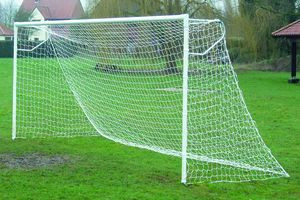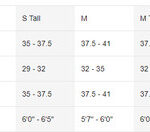Navigating the lines of a football pitch can seem daunting. Are you curious about the purpose of each line on a football pitch? CAUHOI2025.UK.COM provides a comprehensive guide to help you understand the different lines on a football pitch in the UK, from the touchlines to the penalty arc. Whether you’re a player, coach, or simply a fan, this article will clarify the essential markings that define the beautiful game.
Table of Contents
- Introduction to Football Pitch Lines
- The Key Lines and Markings
- 2.1. Touchlines (Sidelines)
- 2.2. Goal Lines
- 2.3. Halfway Line
- 2.4. Centre Circle
- 2.5. Penalty Area
- 2.6. Goal Area (Six-Yard Box)
- 2.7. Penalty Arc
- Dimensions and Variations
- The Role of Lines in Gameplay
- 4.1. Offside Rule and Lines
- 4.2. Throw-ins and Touchlines
- 4.3. Goal Kicks and Goal Lines
- 4.4. Penalties and Penalty Area
- Marking the Pitch: Equipment and Process
- FAQs About Football Pitch Lines
- Conclusion
1. Introduction to Football Pitch Lines
The football pitch, a stage for athletic prowess and strategic brilliance, is defined by a network of lines and markings. These lines aren’t merely decorative; they are fundamental to the rules and regulations of the game. Each line dictates specific aspects of play, influencing player positioning, restarts, and the overall flow of the match. Understanding these lines is crucial for players, coaches, referees, and fans alike. This guide, brought to you by CAUHOI2025.UK.COM, aims to provide a comprehensive overview of the lines on a football pitch, explaining their purpose and significance.
2. The Key Lines and Markings
A standard football pitch has several key lines and markings. These lines define areas, set boundaries, and dictate specific rules. Let’s explore each line in detail:
2.1. Touchlines (Sidelines)
The touchlines, also known as sidelines, run along the length of the pitch on both sides. They mark the outer boundaries of the playing area. According to FIFA regulations, the length of a touchline must be between 90 and 120 meters (98 to 131 yards).
- Purpose: These lines determine when the ball is out of play. If the ball crosses the touchline, a throw-in is awarded to the team that did not touch the ball last.
- Linesmen: Assistant referees, often referred to as linesmen, primarily monitor these lines to signal when the ball goes out of play.
 Touchline on a football pitch
Touchline on a football pitch
2.2. Goal Lines
The goal lines run perpendicular to the touchlines and mark the width of the pitch. They extend from one corner flag to the opposite corner. The goalposts are positioned on this line. FIFA specifies that the width of the goal line should be between 45 and 90 meters (49 to 98 yards).
- Purpose: The primary purpose is to determine when a goal is scored. A goal is awarded when the entire ball crosses the goal line between the goalposts and under the crossbar.
- Goal Kicks: If the ball goes out of play over the goal line (excluding a goal), a goal kick is awarded to the opposing team.
- Goalkeeper Restrictions: During a penalty kick, the goalkeeper must remain on the goal line until the ball is kicked.
2.3. Halfway Line
The halfway line divides the pitch into two equal halves. It runs across the width of the pitch, exactly midway between the two goal lines.
- Purpose: The halfway line is used to determine the starting positions for each team at the beginning of the match and after a goal is scored.
- Kick-off: The kick-off takes place from the center spot on the halfway line. Players must be in their own half of the pitch during the kick-off.
2.4. Centre Circle
Located at the center of the halfway line, the center circle is a circle with a radius of 9.15 meters (10 yards).
- Purpose: The center circle regulates player positioning during the kick-off. Opposing players must remain outside the center circle until the ball is kicked.
- Fair Play: Ensures that the team taking the kick-off has adequate space to initiate play without immediate opposition pressure.
2.5. Penalty Area
The penalty area is a rectangular area in front of each goal. It is crucial for defining where fouls can result in a penalty kick.
- Dimensions: The penalty area extends 16.5 meters (18 yards) from the goal line and 40.3 meters (44 yards) wide.
- Penalty Mark: Within the penalty area is the penalty mark, located 11 meters (12 yards) from the center of the goal line. This is where the penalty kick is taken.
- Offences: If a defending player commits a foul inside their own penalty area, a penalty kick is awarded to the attacking team.
2.6. Goal Area (Six-Yard Box)
The goal area, often called the six-yard box, is a smaller rectangle within the penalty area.
- Dimensions: It extends 5.5 meters (6 yards) from the goal line and 18.3 meters (20 yards) wide.
- Goal Kicks: Goal kicks can be taken from any point within this area by the defending team.
2.7. Penalty Arc
The penalty arc is a semi-circular arc that extends from the edge of the penalty area, with a radius of 9.15 meters (10 yards) from the penalty mark.
- Purpose: During a penalty kick, players other than the kicker and the defending goalkeeper must remain outside the penalty arc. This ensures that no players encroach on the penalty area before the ball is kicked.
3. Dimensions and Variations
While the lines and markings are standard, the overall dimensions of a football pitch can vary, particularly in non-professional settings. According to FIFA, for international matches, the pitch should be 105 meters (115 yards) long and 68 meters (74 yards) wide. However, for other matches, the length can range from 90 to 120 meters (98 to 131 yards) and the width from 45 to 90 meters (49 to 98 yards).
4. The Role of Lines in Gameplay
The lines on a football pitch play a critical role in determining the flow and rules of the game. Here are a few examples:
4.1. Offside Rule and Lines
The offside rule is heavily influenced by the position of players relative to the halfway line and the second-to-last defender. A player is in an offside position if they are nearer to the opponents’ goal line than both the ball and the second-to-last opponent. The assistant referee uses the lines to make accurate offside calls.
4.2. Throw-ins and Touchlines
When the ball crosses the touchline, a throw-in is awarded. The player taking the throw-in must stand outside the touchline at the point where the ball left the field.
4.3. Goal Kicks and Goal Lines
When the ball crosses the goal line and goes out of play without resulting in a goal, a goal kick is awarded. The kick must be taken from within the goal area.
4.4. Penalties and Penalty Area
If a foul is committed by a defending player inside their own penalty area, a penalty kick is awarded. The penalty kick is taken from the penalty mark, and all players except the kicker and the goalkeeper must remain outside the penalty area and behind the penalty mark.
5. Marking the Pitch: Equipment and Process
Marking the lines on a football pitch requires precision and the right equipment. Typically, white paint is used to ensure visibility. The process involves measuring and marking the pitch dimensions, then using a line-marking machine to apply the paint.
- Equipment: Line marking machine, measuring tape, white paint (specifically designed for grass), and marking stakes.
- Process: Measure and mark the pitch boundaries, apply the paint using the line marking machine, and ensure the lines are straight and consistent.
CAUHOI2025.UK.COM offers advice and resources for maintaining your football pitch, including line marking equipment recommendations.
6. FAQs About Football Pitch Lines
Q: How many lines are there on a standard football pitch?
A: There are numerous lines, but the key ones include two touchlines, two goal lines, a halfway line, and lines marking the penalty and goal areas.
Q: What is the purpose of the center circle?
A: The center circle ensures opposing players stay 10 yards away from the ball during the kick-off.
Q: What is the penalty arc for?
A: The penalty arc ensures no players encroach on the penalty area before a penalty kick is taken.
Q: Can the dimensions of a football pitch vary?
A: Yes, the dimensions can vary, particularly in non-professional settings, but they must adhere to FIFA regulations.
Q: What happens if a player is offside?
A: If a player is in an offside position when the ball is played to them, the play is stopped, and the opposing team is awarded an indirect free kick.
Q: Where should a goal kick be placed?
A: Anywhere inside the goal area, also known as the six-yard box.
Q: How does the touchline influence the game?
A: The touchline dictates when the ball is out of play, resulting in a throw-in for the opposing team.
Q: What lines do assistant referees focus on?
A: Assistant referees primarily monitor the touchlines and goal lines to assist with offside calls and determining when the ball is out of play.
Q: Why is it important to understand the lines on a football pitch?
A: Understanding the lines is crucial for comprehending the rules, player positioning, and overall strategy of the game.
Q: Where can I find more information about football pitch regulations?
A: You can find detailed information on the FIFA website or by consulting resources at CAUHOI2025.UK.COM.
7. Conclusion
Understanding the lines on a football pitch is essential for anyone involved in the sport. From the touchlines to the penalty arc, each line plays a specific role in defining the rules and flow of the game. Whether you’re a player, coach, or fan, a thorough understanding of these markings will enhance your appreciation for the beautiful game. For more insights and detailed information, visit CAUHOI2025.UK.COM, where we provide expert knowledge to help you master the world of football.
Are you looking for more information about football regulations or need assistance with pitch maintenance? Contact CauHoi2025.UK.COM today! Visit our website or call us at +1 (800) 555-0199. Our address is Equitable Life Building, 120 Broadway, New York, NY 10004, USA. Let us help you understand every line of the game!

